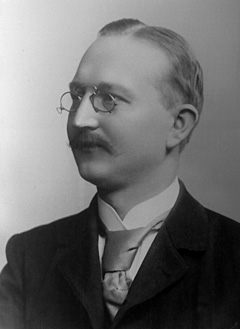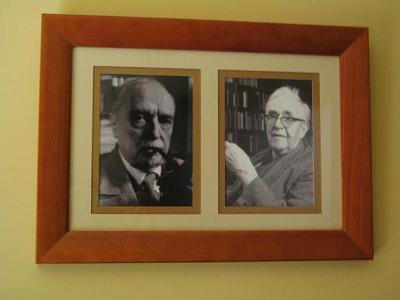 I began reading Church Dogmatics II/2 from the beginning the other day with the hope that I can read a few pages a day. I have not read Barth’s doctrine of election since my honours year in 2001 and am looking forward to a systematic engagement with the grand master once again. Of course I read the preface because it is amazing what one finds in some of Barth’s prefaces. Take this, for instance:
I began reading Church Dogmatics II/2 from the beginning the other day with the hope that I can read a few pages a day. I have not read Barth’s doctrine of election since my honours year in 2001 and am looking forward to a systematic engagement with the grand master once again. Of course I read the preface because it is amazing what one finds in some of Barth’s prefaces. Take this, for instance:
A good deal has already been said about the size both of the work as a whole and also of each if its constituent parts. It may be conceded that the Bible itself can put things more concisely. But if dogmatics is to serve its purpose, then I cannot see how either I myself, or any contemporaries known to me, can properly estimate the more concise statements of the Bible except in penetrating expositions which will necessarily demand both time and space. In the last analysis I ask of my readers no greater patience than that already demanded of myself. For our mutual consolation I offer a historical reminiscence. When Schleiermacher was struggling to finish the first draft of his Christian Faith, on September 7, 1822 he wrote to his friend Twesten: “Every time I see this book, I sigh at its bulk.” I know that my own Dogmatics is already a good deal bulkier than Schleiermacher’s Christian Faith. Yet Twesten’s reply on March 9, 1823 might equally well be applied to my own book: “You complain about the size of your book, but do not worry; for most of us the size is indispensable to understanding, and the few who would perhaps have understood you from a lesser work will certainly accept with gratitude all the elucidations you want to give.” Yes, for a right understanding and exposition there is need of a thorough elucidation. May it not be that I have been too short and not too long at some important points? (ix, emphasis added).
Yes, Karl, far too short – not!
Yet actually, it is the depth and penetration of Barth’s analysis that makes reading him so rewarding. If each theological topic is like a brick in the wall, Barth not only describes its length, breadth, texture, colour and placement, he draws the brick itself from the wall for further examination—and—it is two miles deep as well!
In a recent article at First Things that serves as a fine introduction to Barth’s life work, Timothy George, founding dean of Beeson Divinity School and perhaps dean of Baptist scholarship as well, records an interesting anecdote about Barth’s theology:
When Harvey Cox was a student minister in Berlin in 1962, one year after the erection of the Wall, he was able to travel back and forth between East and West because he held an American passport. He thus became a courier for pastors and Christian laypeople on both sides of that divide and was sometimes able to smuggle theological books into the East. What the people wanted most were copies of Karl Barth’s Church Dogmatics. “To carry in something by Bultmann would have been a wasted risk,” Cox said. “Let the bourgeois preachers in West Germany agonize about the disappearance of the three-decker universe and existentialism. We had weightier matters to confront.”

